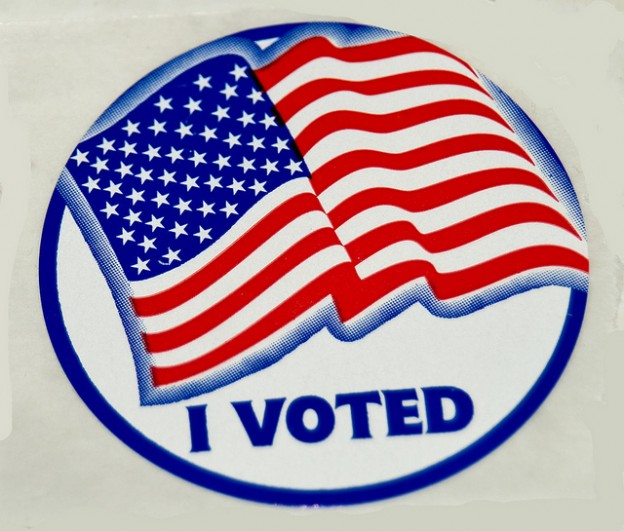Election Day is finally here and with it a massive online news audience. News outlets have rolled out red-and-blue maps, Facebook Live events, live blogs, decision desks and real-time turnout projections to engage and, yes, even inform users.
But as with much in media, it can be tricky to pick out the metrics that matter most. How does all of that get measured? As I’ve written before, it’s helpful to start with a success statement. For Election Day coverage, your success statement might sound something like this: Our coverage was accurate and timely. New readers spent meaningful time with our products, and we reinforced the relationship with our most loyal readers.
“I’d look at new visitors to your election content during the next day or so,” says Sachin Kamdar, CEO of Parsely. “I’d then look at returning visitors during the same timeline. What you’d hope to see is a spike in new visitors followed by a smaller spike in returning visitors to election content.”
With your goal in mind, here are some of the best metrics to watch as election results roll in.
Possible Ideas for Election Day Metrics
- Site uptime (send some extra love to the people who make it all possible)
- Peak concurrent visitors
- Homepage visits
- Homepage visits from new users
- Traffic to election results
- Total time on site
- Political newsletter signup rates
- New Twitter followers
- Facebook Live viewership
- Facebook Reactions
- Cross-platform earned media
- Speed and quality of fact-checks against voter misinformation
- Accuracy of election calls
- Unique visitors as share of market

For the election, The Los Angeles Times is offering a free week of access in exchange for your email address.
Drop all the paywalls!
Many big news sites have taken down their paywalls for Election Day, and some for longer. The New York Times is offering 72 hours of unlimited access for all site visitors.
@nytimes to offer open access to https://t.co/LnudCGHu1l Nov. 7-9https://t.co/zBdalU9S8Z pic.twitter.com/HsG5wxeqqZ
— NYTCo Communications (@NYTimesComm) November 3, 2016
The Washington Post’s paywall is down too, part of a big push for traffic across all products and platforms.
“We’re taking advantage of new platforms like Facebook and Periscope along with increasing traffic to our site to provide a first and second screen experience for our readers,” the Washington Post director of video Micah Gelman told FishbowlDC.
The Los Angeles Times dropped its paywall but added a twist: You need to give them an email address in order to take advantage of the offer. The paper’s endorsements have remained behind a paywall even as Angelenos have been filling out their mail-in ballots and looking for information on the 17 propositions up for a vote.
Researching props on @latimes editorials when baam!, paywall. You’d think those pages would be available given election & props’ importance.
— Jhony Gutierrez 🏀 (@andthefoul) November 7, 2016
Hey @latimes, your online paywall restricts many voters from being more well-informed. Isn’t an informed public more important than $2/wk?
— Joey Kennedy (@JoeyMKennedy) November 5, 2016
hey @latimes (also @mattdpearce flagging this to you) – can you have the paywall unlocked on the endorsements info for the next few weeks?
— Sara Luckow (@saraluckow) October 25, 2016
The strategy behind dropping paywalls seems fairly clear: the traffic spike is going to be so big that newspapers can treat this as an opportunity to reach new readers who may someday turn into customers.
“By dropping your paywall you can capture audience that might never go to your site,” Kamdar says.
The public-interest DNA of newspapers makes an appearance too — it’s their mission, if not always their bottom line, to inform the public on such a momentous day.
#ElectionLand Aims to Help Voters
Meanwhile ProPublica’s ElectionLand shows what journalism-as-a-service looks like on Election Day. Along with Google News Lab, WNYC, CUNY Graduate School of Journalism, First Draft, Univision, USA Today and many others, ProPublica is monitoring voting problems shared with them via social media and the #ElectionLand hashtag, or submitted directly to a rapid-response team via Twitter DM, text message or web report.
An innovative real-time map built by Google News Lab for the project shows where voting issues like long wait times and voting machine problems trend.
“To ensure the map includes the most relevant trends, we compiled a list of ways English and Spanish-speaking voters might indicate voting issues through their search queries on Election Day, by looking at historical data from 2012 Election, Super Tuesday 2016, and early voting 2016,” Simon Rogers writes on Medium.
This is a mission-driven approach to Election Day coverage — it’s not only about audience and engagement but also the civic function of journalism that isn’t always carried forward in even the most dynamic election-results pages on Election Day.
How do you measure your Election Day coverage?
Be sure to check out our MediaShift Election Day Live-Blog throughout the day and night for the best on election coverage.
Jason Alcorn (@jasonalcorn) is the Metrics Editor for MediaShift. In addition to his work with MediaShift, he works as a consultant with non-profits and newsrooms.

